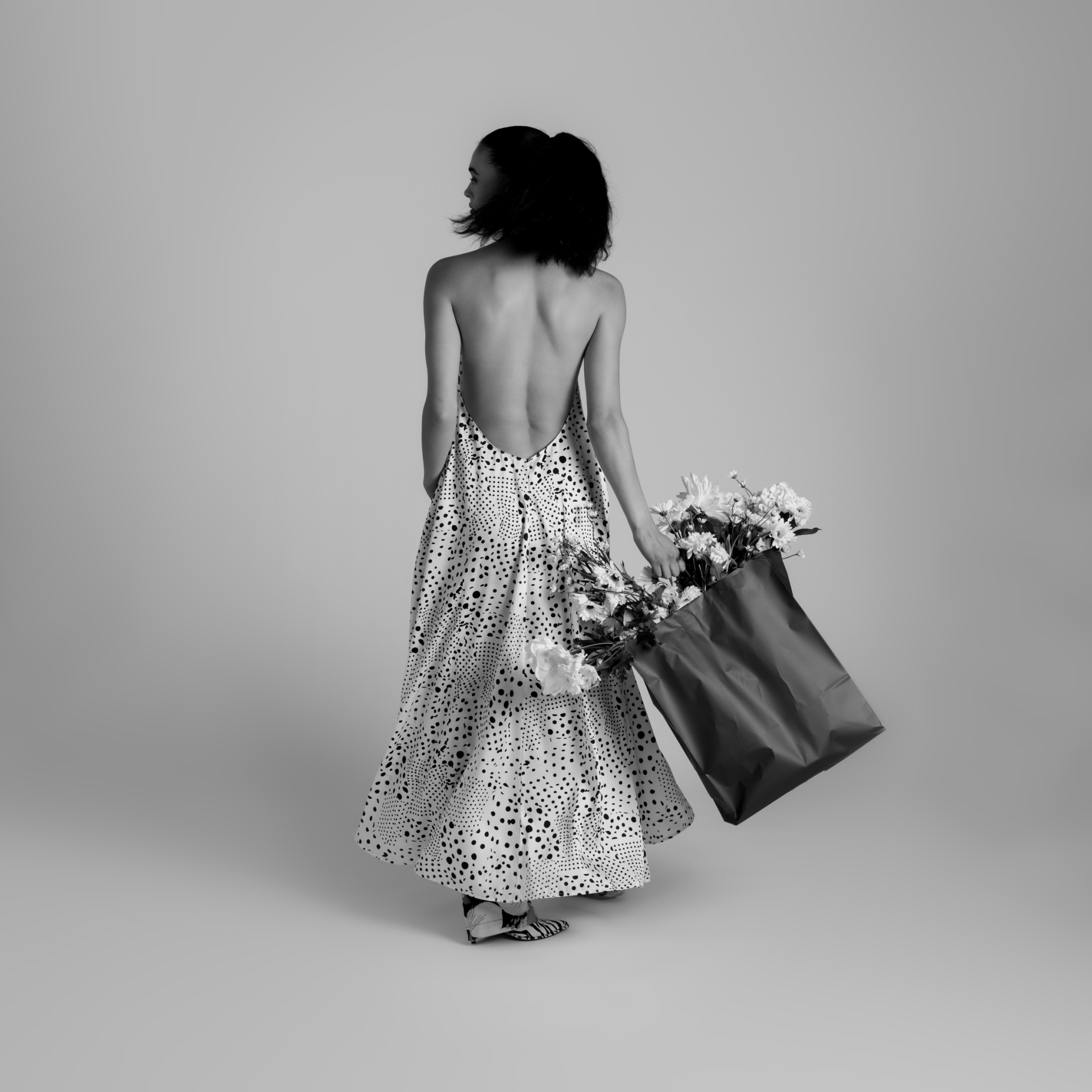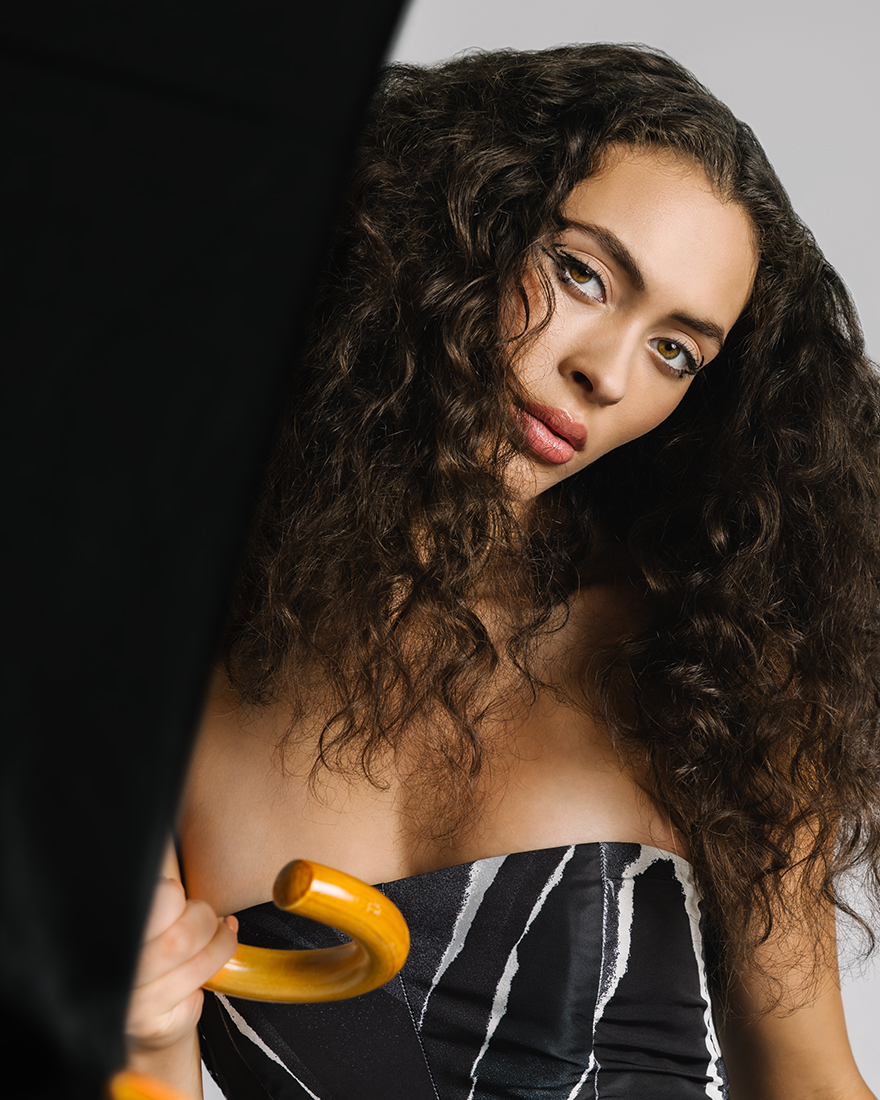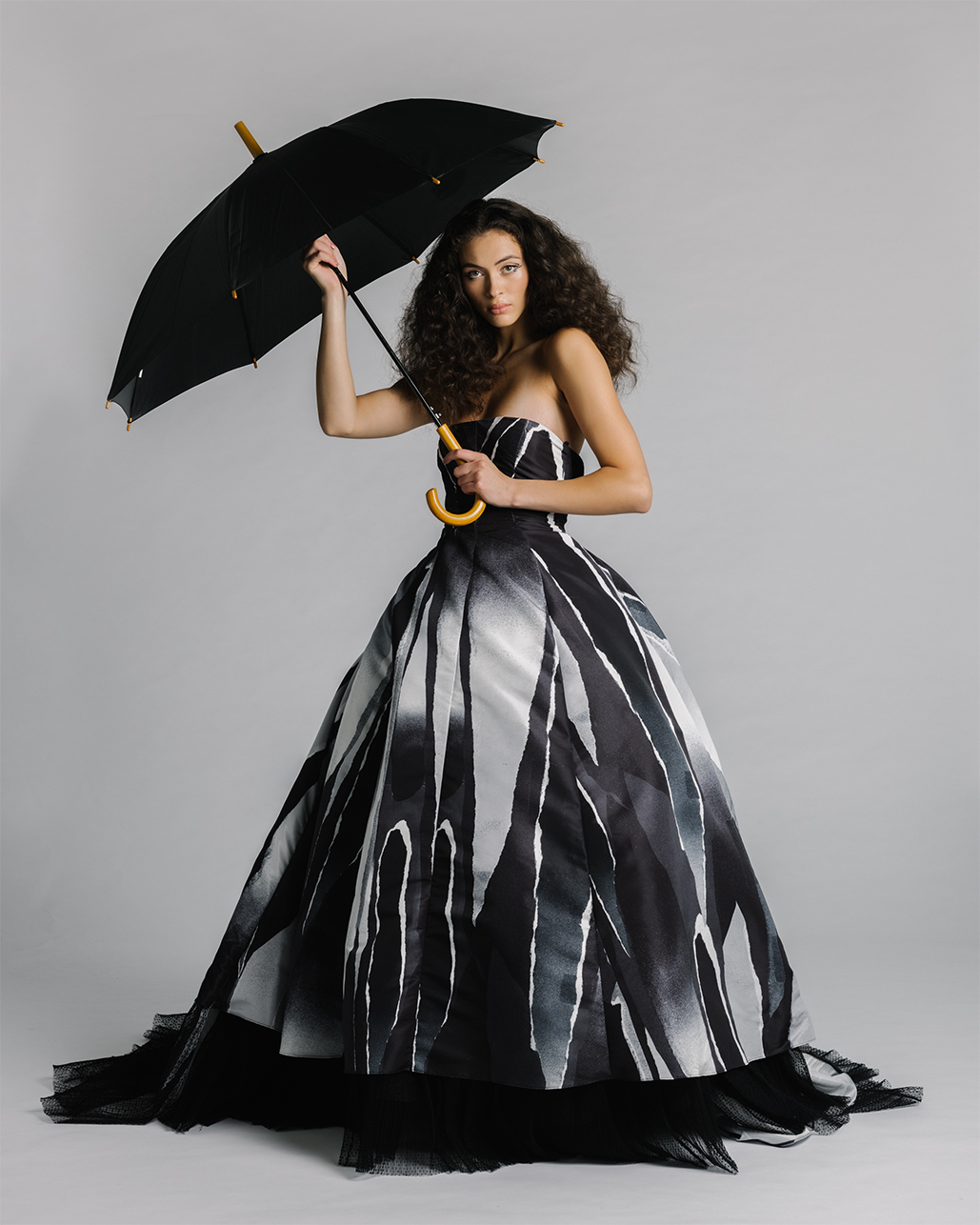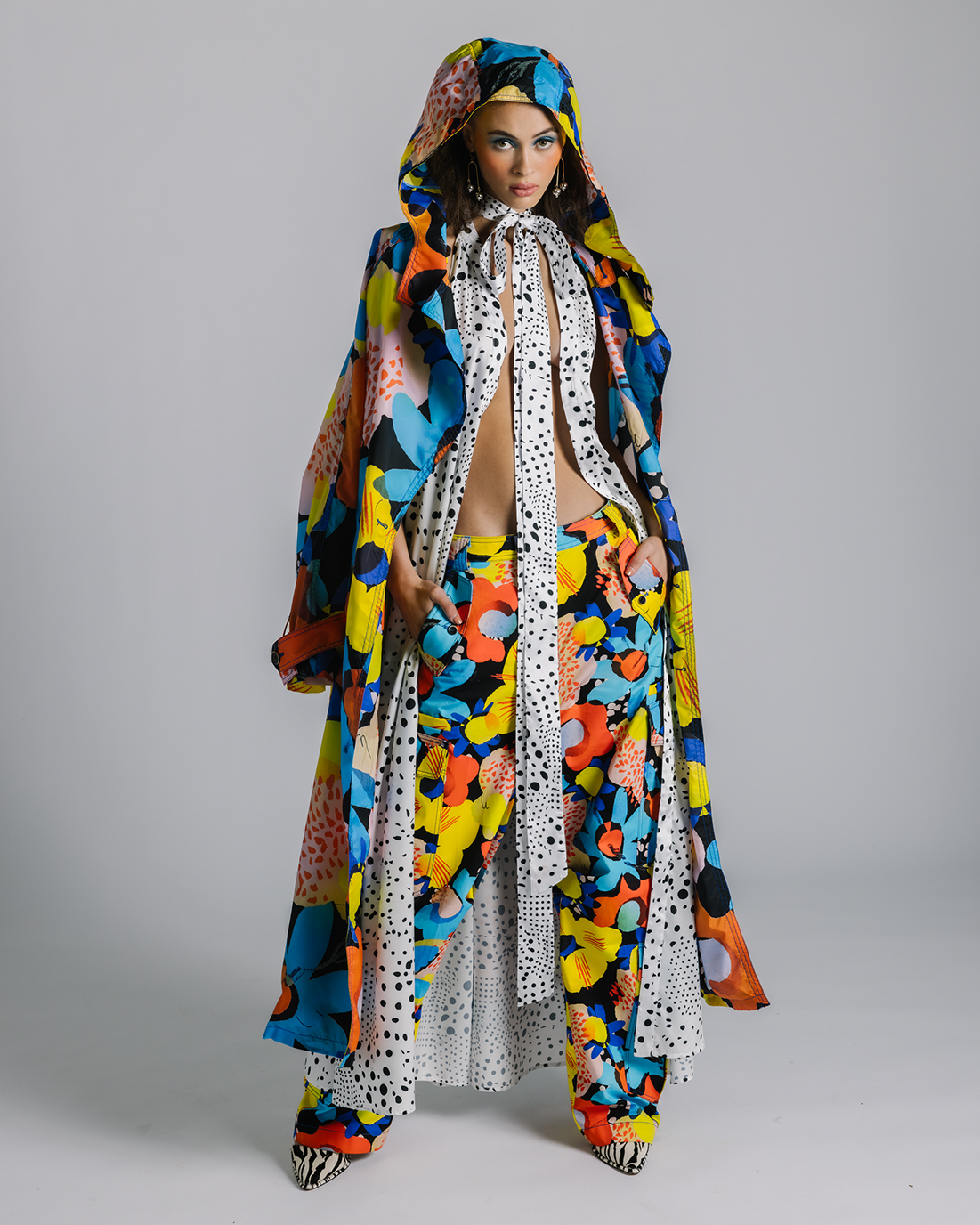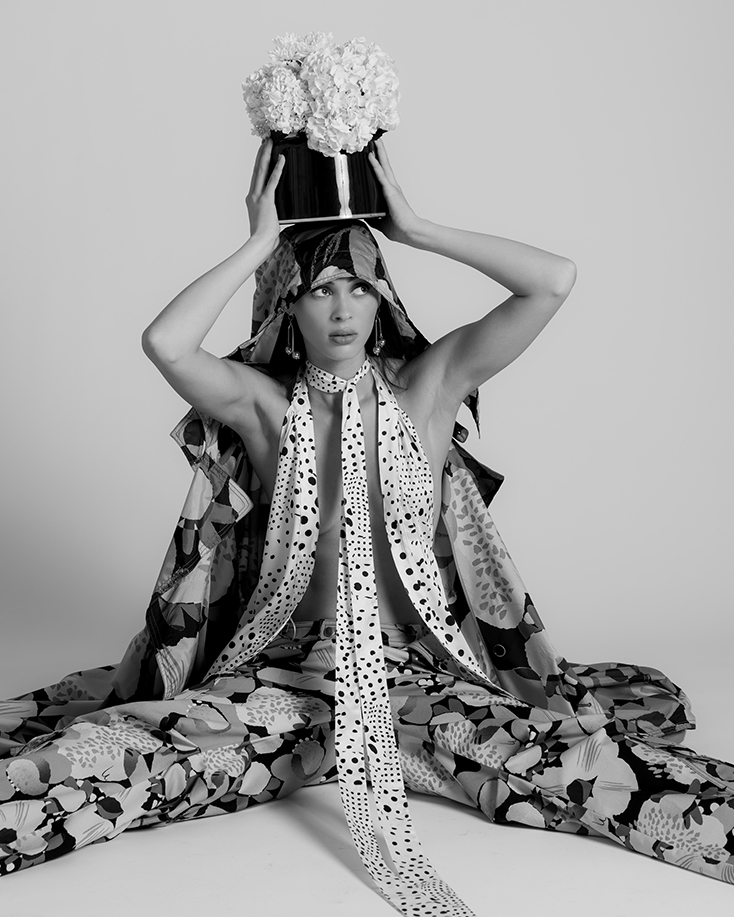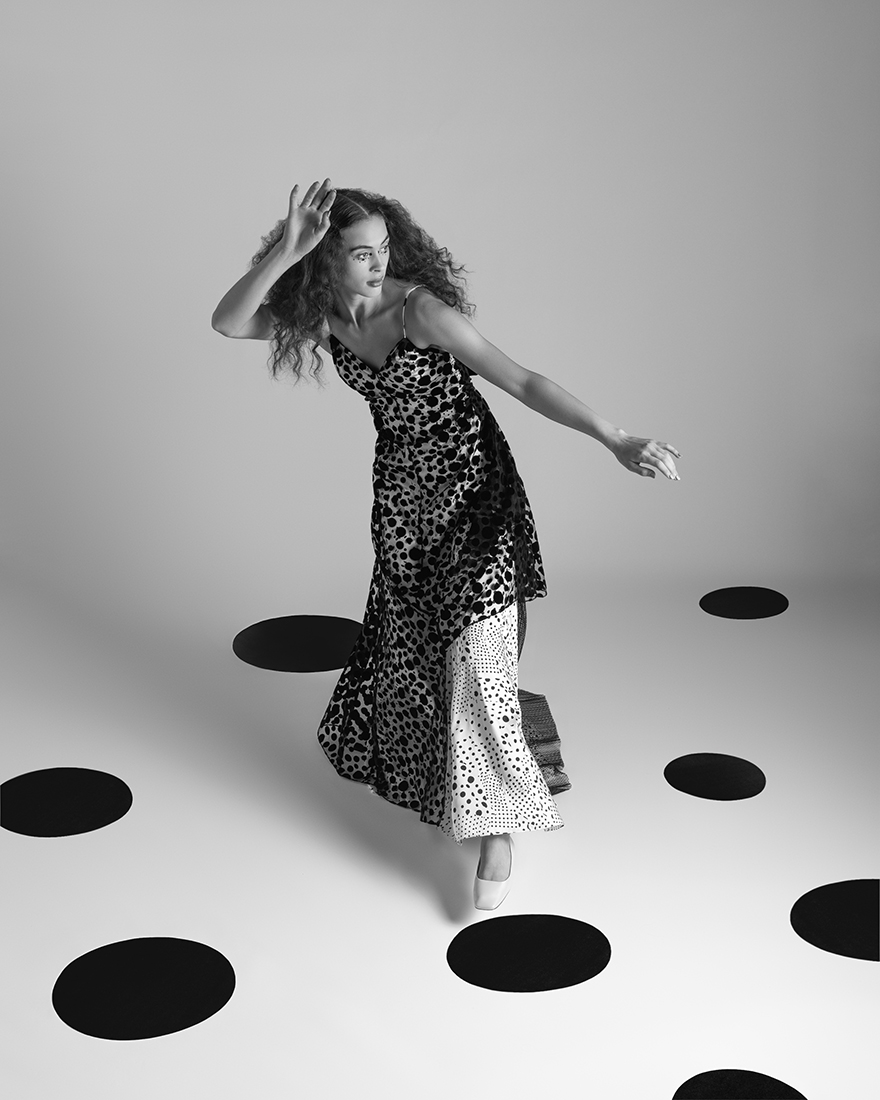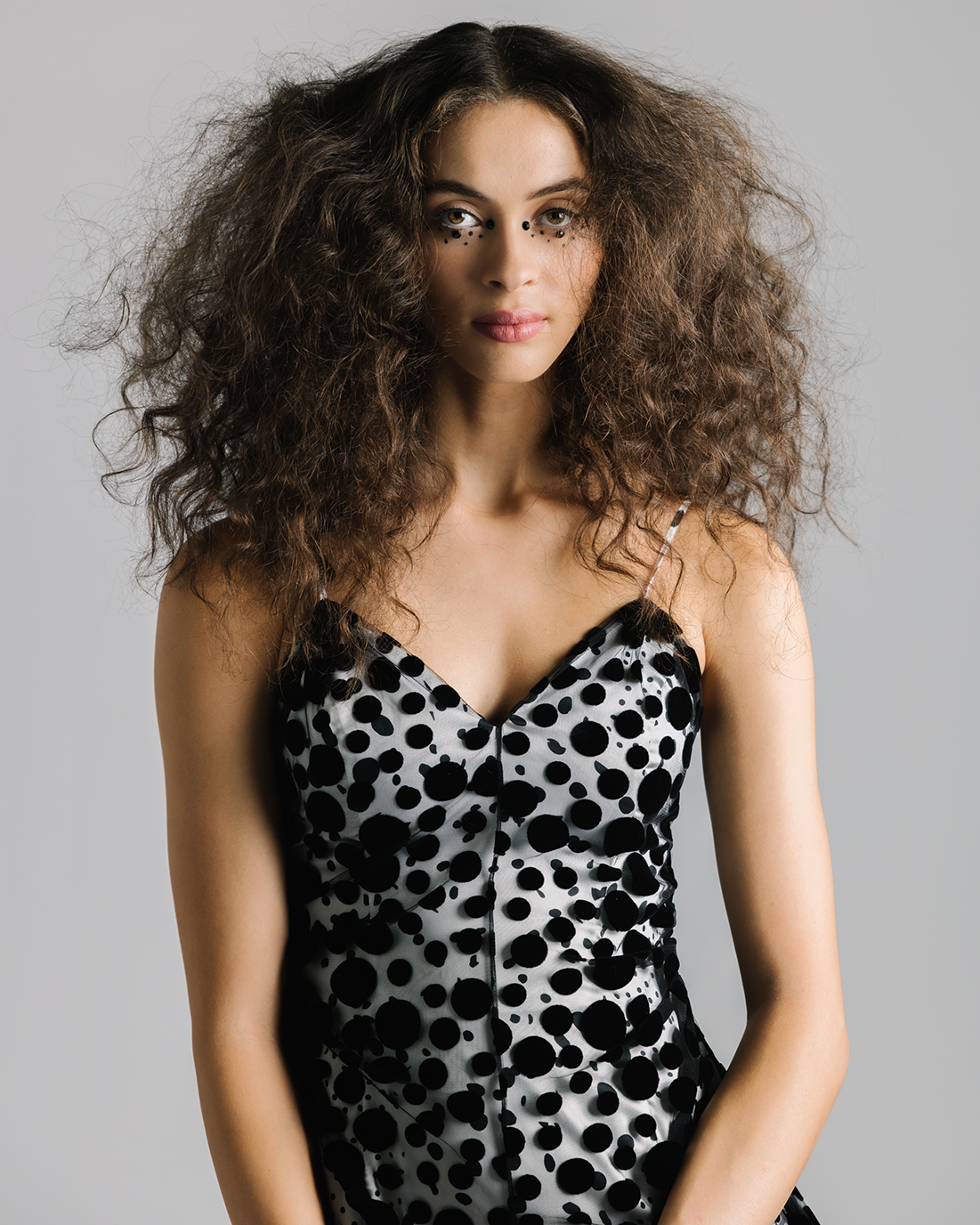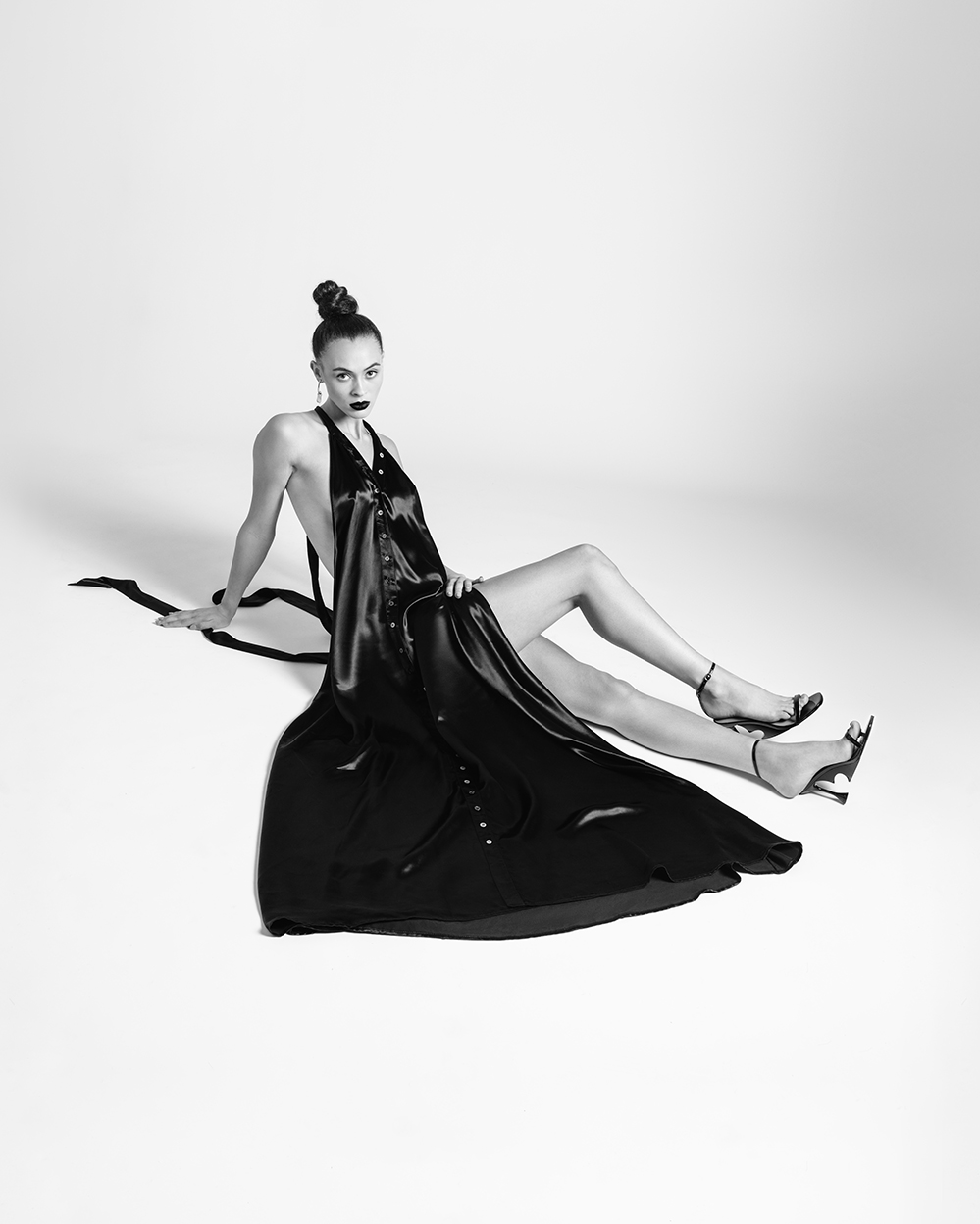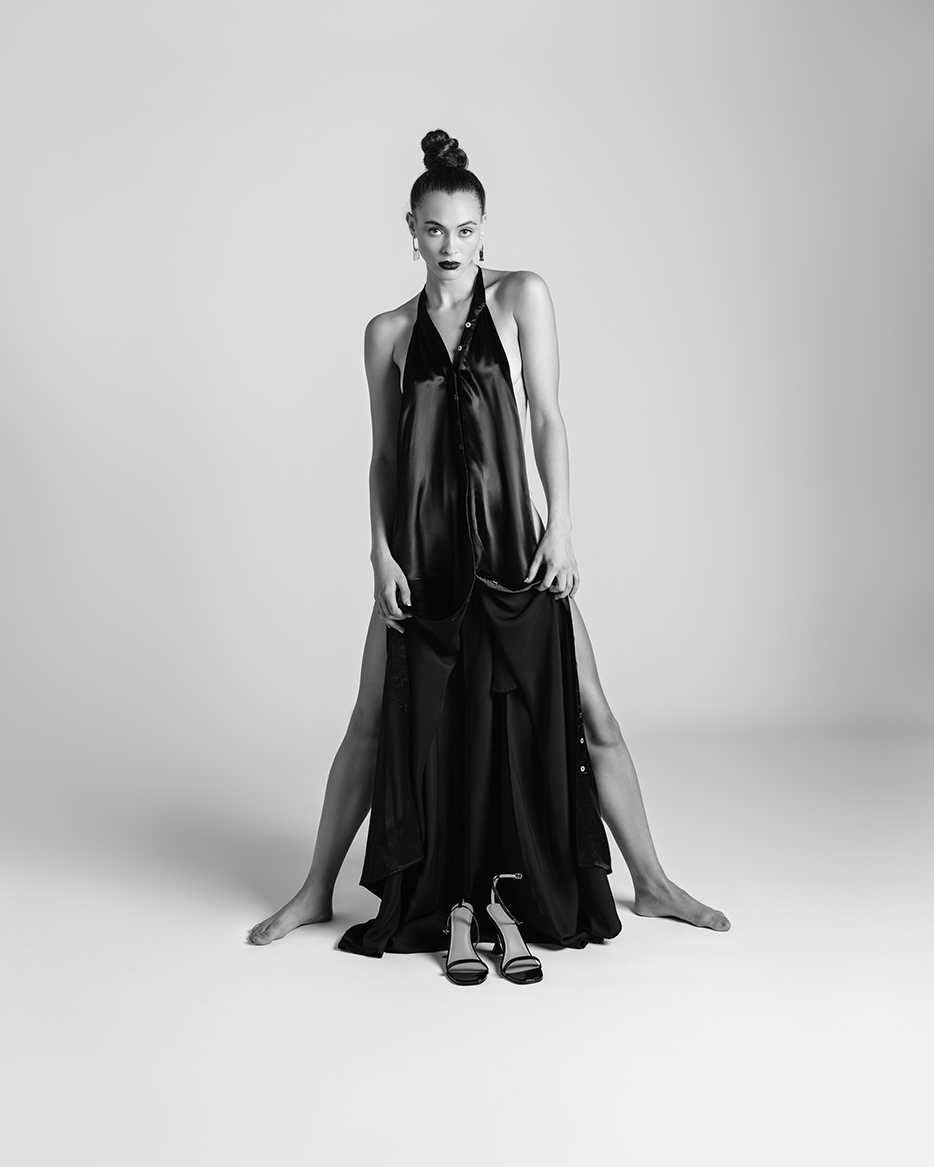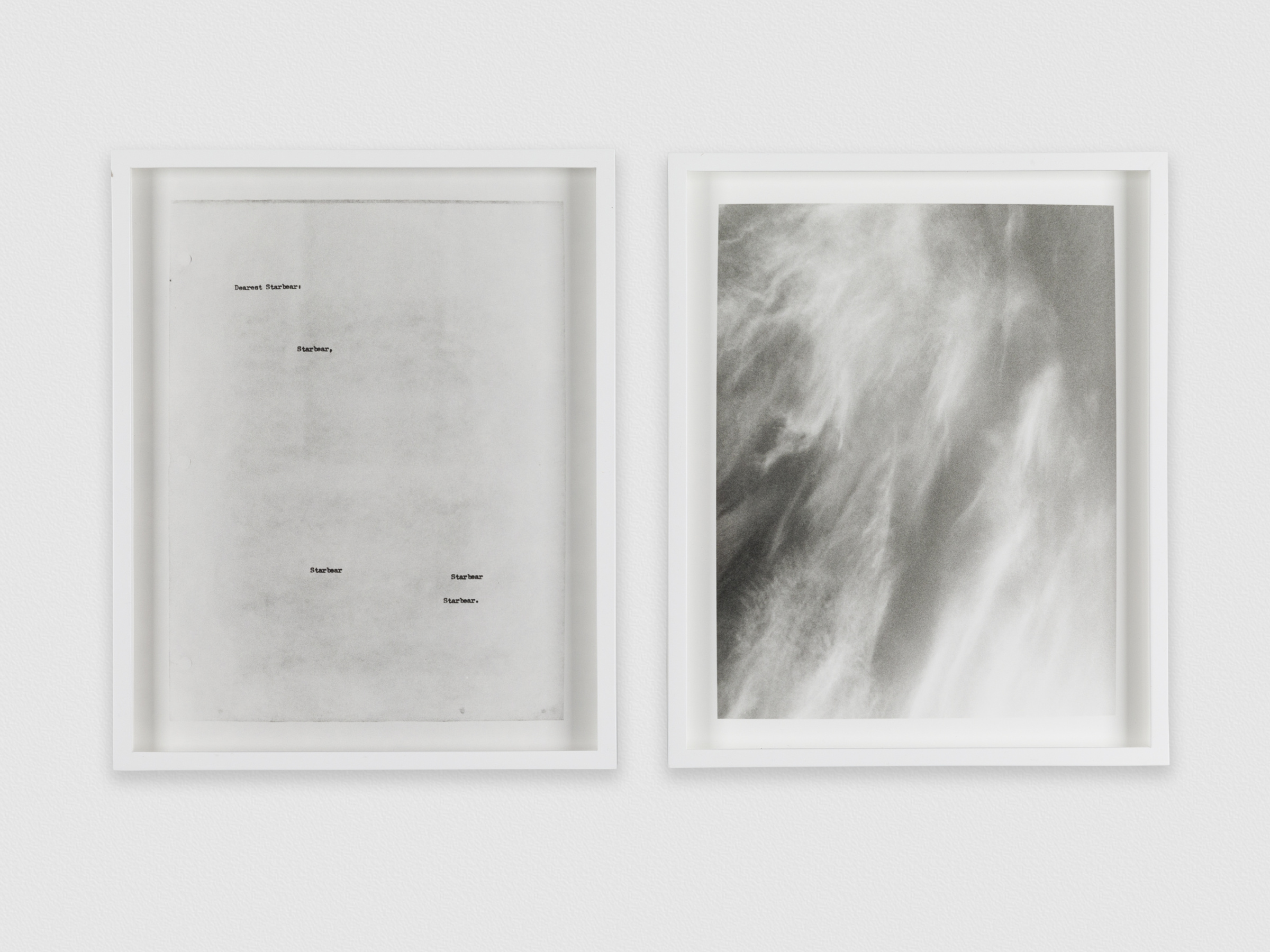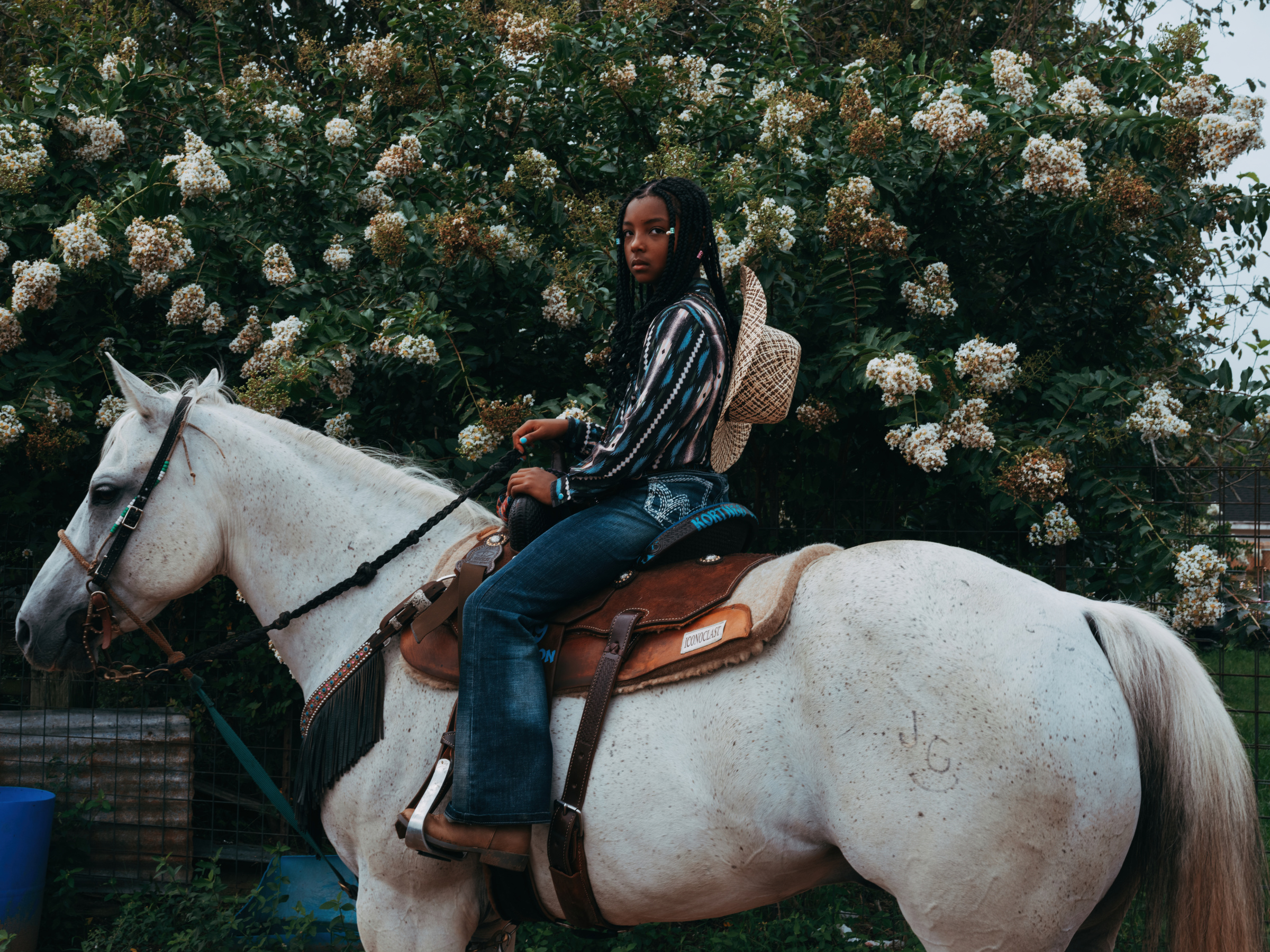In 2016 Christopher John Rogers was waiting tables in New York City. Driven by a fearless obsession with creating his own fashion label, he moved to the city to find a way to make his clothes full-time. When he wasn’t working in restaurants he was working at home, creating clothes in his living room, emailing fashion editors, applying for internships, and politely pestering stylists to consider the work of his eponymous label. It worked. Five years later he was onstage being handed the CFDA Womenswear Designer of the Year Award, one of the highest honors in the industry.
Beyonce, Rihanna, Michelle Obama, Lady Gaga—all have worn his work, but modesty still enshrouds the designer, who recently turned 30. In many ways Christopher does not resemble his work, which is known for its vibrance, dramatic silhouettes, and bold combinations of unexpected patterns. When I visit his studio he’s in a discreet ball cap and a denim jacket. He speaks with a soft confidence that reads perhaps as a touch shy, his demeanor belying his massive success. Christopher was included in an exhibition at the MET, who also hosted him for a public talk, a task he admits he’s still uncomfortable with. Christopher is well versed in interviews, but the idea of giving the public advice is where he draws the line. “I’ve been asked to do graduation speeches, and I’m always like, ‘I can’t do that.’ I’m so young. I feel like I haven’t had enough life experience to really tell someone what to do,” he says, which is ironic given that we’re sitting in his Manhattan studio’s conference room while his team furiously packs his work for an upcoming Paris fashion show. Many designers work entire careers and never reach this moment.
- Christopher got his big break designing a cyan trouser suit for Michelle Obama.
- “I like for clothes to teeter between incredibly high octane and quite easy. Depending on how you feel, you can take the garment and make it what you want.”
Christopher, however, brushes off the accomplishment. “Only two of us will travel. I feel like people would expect us to be a bigger operation, that we would have other people doing all the things for us that we’re actually doing,” he says, referring to the many tasks that sit on his desk, including a stack of complicated shipping and customs forms. “It’s a lot. I have a financial call later today, production stuff, and the new collection is about to start happening. There are a lot of things happening simultaneously.”
Christopher’s work grew out of a lifelong interest in fashion and a successful senior year thesis project at the Savannah College of Art and Design, where he learned both technical skills and the theory of fashion design. His work went mainstream when Michelle Obama’s stylist requested a custom look from him; he made a cyan trouser suit she wore on her Becoming book tour. This kind of custom work continued to flow into his studio, as did several awards, press recognition, and major brand collaborations. Very quickly his label, studio, and business were formed, but he’s still fueled by one thing—the clothing.
“I love fashion in all its forms. I’m interested in something that is very editorial and conceptual. I’m also interested in products and how something fits, the rise in a pair of pants that’s cut well enough that different identities can feel comfortable in them. I like being both a product designer and an artist,” he says.
- Christopher John Rogers designs fashion wearing the hats of both product designer and artist. Shoes: Arch NYC; Earrings: Stylist’s own
- Wild colors and patterns layer in Christopher’s designs, adding up to an eclectic, beautiful look. Vase: Variant Large; Glass Vase by Blu Dot
To me it’s often unclear if fashion collections are actually about the clothing or about a product to be sold—a marketing strategy for an eager market. I ask Christopher if he sees things similarly, and he agrees, but with a telling shoulder shrug. “Fashion right now is not about, ‘Oh, I finally found this shirt that fits my shoulders or a pair of trousers where I feel confident.’ Fashion isn’t clothes anymore; it’s entertainment and culture and voyeurism and celebrity. What’s interesting is letting that just be. I do what I love about fashion—the cutting of garments, patternmaking. Clothing as sculpture, without it being eye-rolling.”
“I love fashion in all its forms. I like being both a product designer and an artist.”
His answer is honest, concise. It cuts straight to the point with no baggage or sarcasm. There is something very un-New York about it; where are the irony, resentment, and inside jokes? His work exemplifies the same attitude—few designers could present bright florals mixed with polka dots in total sincerity. I wonder, somewhat selfishly, how he maintains this outlook, especially in an industry so hyper-focused on the next big thing. Does he, like the rest of us, spend hours each day carefully examining all of his peers and social media follows? “I try not to as closely anymore. I’m such a sponge. I can find something interesting anywhere, and it makes me want to do multiple things at once, and that’s not good for me. The more I build this world the more I’m interested in focusing on this.”
Christopher’s focus is likely part of the reason for his success. The fashion industry is notorious for its rapid rise and fall of talents, elevating new icons with the same haste it consigns them to oblivion, which he is fully aware of. He’s addressed the pace by trying to do the opposite, to slow down where possible and search for precision. “I’m trying to be a better editor. It’s not difficult for me to come up with ideas but to deliver them in a succinct and clear way is a new challenge for me.”
- Christopher John Rogers produces tightly edited collections “off-calendar” to allow them to make as big an impact as possible. Shoes: Vince
- “I think it’s nice for the storytelling and the world-building to have things that speak to each other, a through line. You’re not really creating 100 all-new ideas every season; you’re evolving some and introducing some.”
Part of his strategy has been to produce less work; his recent collections include about half as many new pieces as they did previously. In addition to tighter editing, the label also releases new collections pre-season as opposed to during the main season, aka “off-calendar.” This gives him a slight advantage to shine when the market is a bit calmer. “We do things in our time. Buyers have bigger budgets for pre-seasons, and our collections get to sit for three months longer without going on sale. It’s really good.”
In addition to setting his own pace Christopher emphasizes advancing his work over reinventing it. “I always start a new collection with the season before. I’m looking at successes and things we could have improved upon. It’s not as challenging if you’re taking a trouser shape from last season and evolving it as opposed to starting from scratch. I think it’s nice for the storytelling and the world-building to have things that speak to each other, a through line. You’re not really creating 100 all-new ideas every season; you’re evolving some and introducing some.”
- “There is an aggressive optimism to what we’re doing. Our clothes are real. You can wear them.” Shoes: ARCH NYC; Earrings: Stylist’s own
- Making people feel special through fashion design motivates Christopher.
Customers have flocked to the world he is building. “We have a dress made from an industrial Japanese nylon. It’s usually used for outerwear; it’s incredibly crunchy and not super wearable, but if you cut it in a certain shape and give it a certain amount of volume it feels like Balenciaga from the 1960s. It’s a dress you could go hiking in. Would you go do that? No. But it’s at a lower price point than had we done it in the finest silk, and then it would have been less wearable and less accessible. Less useful maybe. Are people really interested in having that conversation? Maybe not. But our customer is.”
Christopher’s work falls squarely into the luxury realm, and I wonder if, given his middle-class upbringing, he ever feels conflicted about how attainable his clothing is. Luxury, something that is special, can’t be average; it can’t be for everyone. “We’re not for everyone,” he emphasizes. “Not because of price but because of design. When we first started pricing things I couldn’t relate to it. Growing up I would shop at the mall and go thrifting. To have a top that is $1,800, I didn’t understand it. But then we would be sitting next to brands with tops for $4,000. I had to become comfortable with the fact that these clothes are really special. The fabric is amazing. The construction is insane, and the people making these clothes are getting paid living wages to exist in New York or Italy or wherever we’re making the work. We’re a business. We have to make money. The price is reflective of everything that goes into it,” he says. “To see someone who spent their hard-earned money on something really special and to see them feeling great, that’s amazing.”
“To see someone who spent their hard-earned money on something really special and to see them feeling great, that’s amazing.”
The wild patterns and bold cuts of his work are sometimes described as cheerful, but looking through his collections I see something more aggressive—a reaction to tense times, an assertive demand to exist for an audience of one. “I feel like we’re in a hard time, but I’m trying to be positive. There is an aggressive optimism to what we’re doing. Our clothes are real. You can wear them.” Christopher points to a nearby dress hanging from a clothing rack that to me looks something like a mix between a sock hop-era poodle skirt and the tutu on Degas’ ballerinas. “This dress is inspired by a 1950s dress we turned inside out. It doesn’t touch the floor; you can still wear this. It’s mostly out of cotton. I have a friend who would wear this with sneakers and go to Trader Joe’s. Giving people that tool is quite glamorous, but putting all the pieces together in a way that’s pragmatic is what’s interesting to me. I like for clothes to teeter between incredibly high octane and quite easy. Depending on how you feel, you can take the garment and make it what you want.”
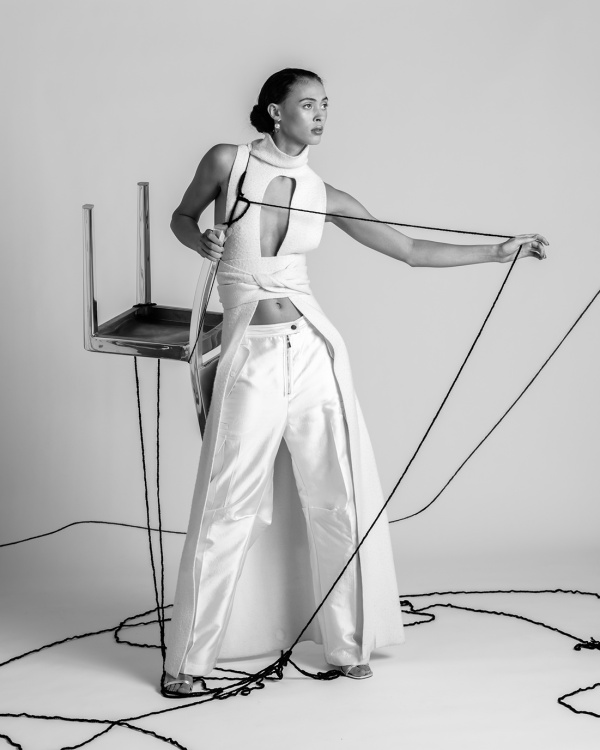
Christopher plans to expand his practice to include menswear, beauty, and home. Shoes: ARCH NYC; Earrings: Stylist’s own; Chair: Hudson Chair by Emeco
Christopher lights up most when talking about his passion for art and craft, for experimentation. “It’s a magical place to find yourself in when you don’t know if something is going to work. I’ve been trying to explore work that is in-process, the feeling that it’s being worked on or being worn. That’s informed by a lot of the mistakes I would make when I started patternmaking. I would sew something and one sleeve would be longer than the other so I would have to add a pleat to make it shorter. And then when I did that it created a cool drape and a weird shape. That shape represented me trying to make something beautiful. I’m trying to incorporate those accidents but in intentional ways.”
Christopher has big plans for his studio. He’s interested in doing menswear, beauty, and home. He recently completed a collaboration with the paint brand Farrow & Ball. “The world I’m building is so singular and specific that it’s also quite expansive. I’m interested in as many avenues of expression as possible. We are building a universe with different worlds in it that you can hop around in, like on a spaceship. It’s giving you the tools to be the sort of person you want, but I don’t need to prescribe it to you.”
Styling by Hailey Tessem
Hair & Makeup by Tanya Renelt
Model: Alyssa Falk, The Rock Agency
A version of this article originally appeared in Sixtysix Issue 11 with the title “The Shape of Something Beautiful.” Subscribe today.
